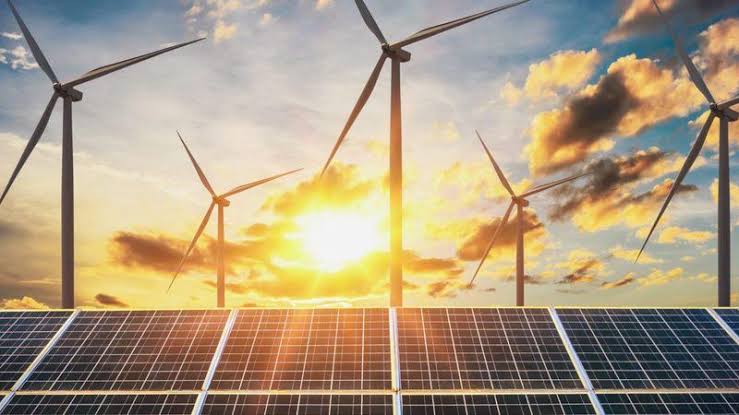Canada, famous for its vast natural areas and resources, is becoming a leader in renewable energy. By July 2025, the country is moving faster toward cleaner and greener energy. This change comes from concern for the environment, strong government goals, new technology, and global efforts to reduce carbon emissions. While hydroelectric power has long been the main source of renewable energy in Canada, new investments in wind, solar, biomass, and green hydrogen are quickly expanding the country’s energy choices.
The push for renewable energy in Canada is not only about climate goals. It’s also about economic opportunity, job creation, Indigenous collaboration, and energy security. As the global energy landscape evolves, Canada is seizing the moment to reposition itself as a renewable powerhouse—an evolution that’s reshaping communities, industries, and public policy.
Hydroelectricity: Canada’s Foundational Renewable Resource
Hydropower has long been the cornerstone of Canada’s renewable energy system. It accounts for nearly 60 percent of the country’s electricity generation, making Canada the second-largest producer of hydroelectricity in the world, after China. Provinces like Quebec, British Columbia, Manitoba, and Newfoundland and Labrador are particularly rich in hydro resources, which they use not only to power their regions but also to export electricity to the United States.
Despite its dominance, hydroelectricity is facing both environmental scrutiny and the need for modernization. Dams can disrupt ecosystems, displace communities, and require substantial upfront investment. In response, many provincial governments have focused on refurbishing aging infrastructure and incorporating smarter water management systems. As of 2025, new developments emphasize ecological conservation alongside energy efficiency, ensuring hydro continues to play a vital but balanced role in Canada’s green transition.
Wind Energy: Rapid Expansion Across the Prairies and Atlantic Canada
Wind energy is Canada’s fastest-growing source of renewable electricity. As of mid-2025, the country has more than 15,000 megawatts (MW) of installed wind capacity, with new projects under development across Alberta, Saskatchewan, and Atlantic provinces like Nova Scotia and New Brunswick. The open landscapes and strong wind currents in these areas offer ideal conditions for onshore wind farms.
In addition, offshore wind is beginning to take root, particularly along the Atlantic coast, where pilot projects are underway. These initiatives are being driven by federal incentives, public-private partnerships, and declining costs of turbine technology. Wind energy is now a major source of revenue and job creation for many rural communities, and continued investment is expected to double capacity by 2030 if current growth trends hold.
Solar Power: Making Strides Despite Climate Challenges
While Canada’s northern latitude presents challenges for solar energy, the sector is expanding rapidly due to falling installation costs, improved technology, and supportive government programs. Ontario remains a leader in solar adoption, but Alberta and British Columbia have seen a surge in solar farms, rooftop panels, and solar-plus-storage systems.
Net metering programs and federal rebates have encouraged homeowners and businesses to invest in solar installations. Moreover, community solar projects are gaining popularity, particularly in Indigenous and remote communities where energy independence is a top priority. As of July 2025, solar energy contributes approximately 3 percent to Canada’s electricity mix—a number expected to climb steadily in the coming years.
Biomass and Bioenergy: Supporting Rural and Forestry Economies
Canada’s vast forests and agricultural lands provide an abundant supply of organic material that can be used for bioenergy production. Biomass, which includes wood pellets, crop residues, and organic waste, is being used to generate heat and electricity, especially in regions where other renewables may be less viable.
In 2025, several pilot projects are integrating biomass into district heating systems and industrial applications. The use of organic waste from farms, sawmills, and food processors is also helping to reduce methane emissions while generating energy. Bioenergy offers a dual benefit: it reduces landfill waste and provides a renewable alternative to fossil fuels. The federal government’s Clean Fuels Fund continues to support these initiatives, particularly in Indigenous and rural regions where economic diversification is needed.
The Rise of Green Hydrogen
One of the most exciting developments in Canada’s renewable energy growth is the emergence of green hydrogen. Produced using renewable electricity to split water into hydrogen and oxygen, green hydrogen offers a zero-emission fuel source with wide applications—from transportation to heavy industry.
In 2025, several hydrogen production facilities are in operation or under construction, particularly in Quebec and Alberta. These regions have access to both abundant renewable power and water resources. Canada’s Hydrogen Strategy, launched in 2020 and updated in 2024, sets ambitious targets for hydrogen deployment and international exports. With global demand for clean hydrogen surging, Canada is positioning itself as a major supplier in the coming decade.
Indigenous Leadership in Renewable Energy
Indigenous communities across Canada are increasingly taking a leading role in renewable energy projects. These initiatives not only support climate goals but also foster economic independence, cultural revitalization, and energy sovereignty. As of July 2025, there are more than 200 Indigenous-owned or partnered renewable energy projects nationwide, spanning solar, wind, hydro, and biomass.
Government programs like the Indigenous Clean Energy Initiative and the Clean Energy for Rural and Remote Communities Program have played a crucial role in empowering Indigenous nations to develop and manage their own energy resources. These partnerships are helping to bridge the energy access gap, reduce diesel dependency in remote areas, and ensure that Indigenous voices are central to Canada’s green transition.
Government Policies and Investments
The federal and provincial governments have made renewable energy a policy priority. Canada’s updated 2030 Emissions Reduction Plan outlines significant investments in clean energy infrastructure, smart grids, and carbon-free power generation. Tax credits, green bonds, and low-interest financing are available for renewable developers and businesses transitioning to clean energy.
In 2025, the Canadian Infrastructure Bank continues to fund large-scale renewable projects, while provincial policies vary in approach but generally support decarbonization efforts. Alberta, once a fossil-fuel stronghold, is making notable strides by attracting private investment in wind and solar. British Columbia is enhancing its CleanBC program, and Quebec continues to lead in hydro exports and energy innovation.
Challenges and the Road Ahead
Despite the progress, Canada faces several challenges in scaling its renewable energy sector. Grid modernization, storage capacity, interprovincial cooperation, and regulatory delays are ongoing obstacles. Furthermore, balancing environmental protection with large-scale development remains a delicate task.
Public opposition to some projects, concerns over land use, and logistical hurdles in northern and rural areas can delay implementation. To meet its 2050 net-zero target, Canada must accelerate innovation in energy storage, interconnectivity, and demand-side management while ensuring that all regions, including the North, are equipped to participate in the transition.
Final Thoughts
As of July 2025, the growth of renewable energy in Canada is a defining feature of its economic and environmental strategy. From massive hydro dams to remote solar grids, the shift to clean power is reshaping how Canadians generate, distribute, and consume energy. While challenges remain, the pace of change reflects a clear national commitment to a greener future.
By combining technological innovation, inclusive partnerships, and forward-thinking policies, Canada is building a resilient energy system that aligns with its climate commitments and economic aspirations. The path ahead will require continued investment, collaboration, and public engagement, but the momentum is unmistakable—Canada’s renewable energy transformation is well underway.



